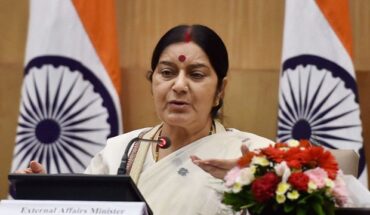Air pollution killed 1.6 million people in China and 1.4 million people in India in 2013, says research
WASHINGTON: More than 5.5 million people die prematurely each year due to air pollution with over half of those deaths occurring in China and India, two of the world’s fastest-growing economies, according to a new research.
According to scientists from the US, Canada, China and India, who presented their findings at the annual meeting of the American Association for the Advancement of Science (AAAS) here, conditions caused by air pollution killed 1.6 million people in China and 1.4 million people in India in 2013. “Air pollution is the fourth-highest risk factor for death globally and by far the leading environmental risk factor for disease,” said Michael Brauer, a researcher from the University of British Columbia. Only high blood pressure, poor diet, and cigarettes kill more people every year than air pollution. “More than 85 per cent of the world’s population lives in areas that exceed the World Health Organisation’s ‘safe level’ of air pollution,” Brauer said in a press briefing to announce the findings. That study analysed health and risk factors such as air pollution that impacted 188 countries between 1990 and 2013. Scientists involved in the initiative say the statistics illustrate how far, and how fast, some nations must travel to improve the air their citizens breathe. The report concludes that China and India, two of the world’s most populous countries, have the filthiest air in the world. In China, the dominant factor is particle emissions from coal burning. The project calculates this source alone is responsible for more than 360,000 deaths every year. In India, the problem that draws particular attention is the practice of burning wood, dung, crop residues and other materials for cooking and heating. This “indoor pollution” causes far more deaths than “outdoor pollution”. And looking at the broad economic trends in India, the research team says the country runs the risk of having even poorer air quality in the future. Scientists warn the early death toll will climb over the next 20 years unless the world does more to fight the problem. “In Asia, you have countries with very large populations that happen to be heavily polluted. You see trends in India, Bangladesh, and Pakistan where the air quality continues to worsen. In China, maybe things have stabilised, but they are very high,” Brauer said. “Also, in those countries the populations are ageing. People are getting older, so you have this greater prevalence of chronic diseases — heart and lung disease and cancer that are affected by air pollution.” Unless China adopts more stringent air pollution standards, limiting coal combustion and particulate emissions from factories and power plants, the report estimated that more than 1 million people would die prematurely by 2030. And even though China has targets to restrict coal combustion and emissions in the future, it may struggle to bring down the number of deaths because it is acquiring an aging population and these citizens are naturally more susceptible to the illnesses associated with poor air quality. “So, we think more aggressive policies are urgently needed to reduce the emissions from coal combustion and other sectors,” stated project researcher Qiao Ma, a PhD student at Tsinghua University in Beijing. Chandra Venkataraman, from the Indian Institute of Technology Bombay warned: “Despite proposed emissions control, there is significant growth in the demand for electricity as well as industrial production. “So, through to 2050, this growth overshadows the emissions controls (in our projections) and will lead to an increase in future air pollutant emissions in 2050 in India,” BBC quoted him as saying. Economic progress in the US, Western Europe and Japan also contributed to high levels of air pollution, according to the report. The researchers, however, hailed lawmakers in the US, Canada, western Europe and Japan – or at least their predecessors, whom were credited with major accomplishments in curbing pollution over the past 50 years. Brauer said the statistics should make governments think hard about the scope of their anti-pollution policies. Medical experts say air pollution leads to heart disease, lung cancer and other respiratory illnesses. According to the World Health Organisation (WHO) air quality guidelines, pollution should be restricted to a daily particulate matter of 25 microgrammes per cubic meter. In February, Beijing and New Delhi typically see daily levels at or above 300 microgrammes per cubic meter — or 1,200 per cent higher than WHO guidelines, researchers said. –PTI





